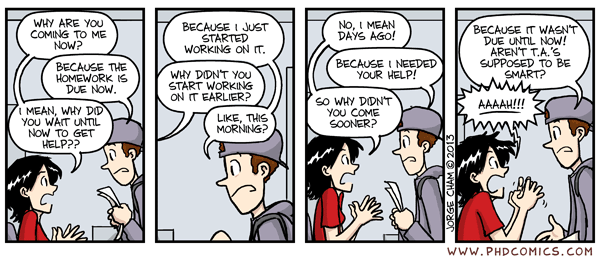So I wasn't planning to write an update on my Logical Thinking class just yet, the next lesson will be tomorrow. Then tonight at dinner something great happened. My younger son, who is soon to be 9 years old and takes my class, saw me preparing the handout he asked for, the one with the logic tree we made last week (as I reported here). So he decided to make his own logic tree. Later I figured out he thought that was their homework, though I only asked for simple If..Then connections.
He sat down and started working on his tree, soon he asked me to review it. It was upside down and quite illogical. He had effects leading to causes, he had facts for effects instead, when trying to read it out using If...Then it made no sense and his statements did not abide any of the rules for writing correct statements. It didn't matter - not to him and not to me, though I did read it out loud to him and asked if he found it made sense, he did. I left it at that. Then he continued working on the tree. As he was working he said - this is a tree of my problem, it explains what is causing it.
I was astonished and very delighted at his ability to figure out, all on his own, that this logic tree thing is really useful and powerful. I think this is the result of the clarity of thinking you reach when using the tree as a guideline to thinking.
In her book "Thinking for a Change", Lisa Scheinkopf claims that learning the basic tools of logical thinking, sufficient cause and necessary condition, is enough. From there you can build everything on your own. I guess my boy proves her right.
Tune in soon to learn how lesson 2 turns out.
He sat down and started working on his tree, soon he asked me to review it. It was upside down and quite illogical. He had effects leading to causes, he had facts for effects instead, when trying to read it out using If...Then it made no sense and his statements did not abide any of the rules for writing correct statements. It didn't matter - not to him and not to me, though I did read it out loud to him and asked if he found it made sense, he did. I left it at that. Then he continued working on the tree. As he was working he said - this is a tree of my problem, it explains what is causing it.
I was astonished and very delighted at his ability to figure out, all on his own, that this logic tree thing is really useful and powerful. I think this is the result of the clarity of thinking you reach when using the tree as a guideline to thinking.
In her book "Thinking for a Change", Lisa Scheinkopf claims that learning the basic tools of logical thinking, sufficient cause and necessary condition, is enough. From there you can build everything on your own. I guess my boy proves her right.
Tune in soon to learn how lesson 2 turns out.
